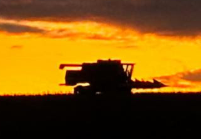Spring lawn care starts with proper lawnmower winterization
By Emily Halstead, K-State Research and Extension news
MANHATTAN, Kan – Taking care of a home lawn can be time consuming but rewarding for many homeowners. Kansas State University horticulture expert Ward Upham said as mowing season ends, it is important to service mowers before storing them for winter.
“Make sure you drain the gas tank of gasoline-powered engines or use a gasoline stabilizer,” Upham said. “Untreated gasoline can become thick and gummy.”
Spark plugs should be replaced. Before putting the new one in, place a few drops of oil inside the hole to lubricate the cylinder. Battery terminals usually corrode during the season, so they should be cleaned with a wire-bristle brush before being removed and stored for winter.
“If you remove the battery, be sure to store it in a protected location for the winter (a cool basement works best),” Upham said.
Cleaning and storing mowers properly is just one part of end of-season-care. Upham also suggests using this time to sharpen mower blades.
“Sharpening rotary mower blades is fairly straightforward,” said Upham, who listed the steps to guide the process:
• Check for major blade damage and replace what can’t be fixed.
• Remove grass and debris with a damp cloth. Dry the blade before sharpening.
• Use a grinding wheel or hand-file to remove nicks from the cutting edge. If using a grinding wheel, match the existing edge angle to the wheel. If hand-filing, file at the same angle as the existing edge.
• File edges to 1/32 inch, or about the size of a period at the end of a sentence.
• Avoid overheating of the blade, as this could warp it.
• For optimum winter storage, clean the blade with solvent or oil. Avoid using water because it will promote rust.
“Following these tips can help you better prepare your mower for winter storage and also save you some steps this coming spring,” Upham said.
Upham and his colleagues in K-State’s Department of Horticulture and Natural Resources produce a weekly Horticulture Newsletter with tips for maintaining home landscapes. The newsletter is available to view online or can be delivered by email each week.
Interested persons can also send their garden- and yard-related questions to Upham at [email protected], or contact your local K-State Research and Extension office.
-30-
FOR PRINT PUBLICATIONS: Links used in this story
K-State Horticulture Newsletter, https://hnr.k-state.edu/extension/info-center/newsletters/index.html
K-State Research and Extension local offices, www.ksre.k-state.edu/about/stateandareamaps.html
K State Research and Extension is a short name for the Kansas State University Agricultural Experiment Station and Cooperative Extension Service, a program designed to generate and distribute useful knowledge for the well being of Kansans. Supported by county, state, federal and private funds, the program has county extension offices, experiment fields, area extension offices and regional research centers statewide. Its headquarters is on the K State campus in Manhattan. For more information, visit www.ksre.ksu.edu. K-State Research and Extension is an equal opportunity provider and employer.
Story by:
Emily Halstead
[email protected]
For more information:
Ward Upham
785-532-6173
[email protected]




